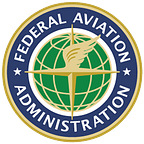Understanding Owner-Performed Preventive Maintenance
By Tom Hoffmann, FAA Safety Briefing Magazine
Pilots who perform preventive maintenance on their aircraft can learn a great deal about the inner workings of engines and airframes, as well as all their associated systems and components. But if this is your first foray into aviation maintenance, it’s a good idea to review some of the basics of what’s required before you get started.
First, you’ll need to know exactly what kind of maintenance you can legally perform on your aircraft. If you hold at least a private pilot certificate issued under 14 CFR part 61 and your aircraft is not used under 14 CFR parts 121, 129, or 135, you may perform preventive maintenance on your own aircraft. To see a list of the 31 items a pilot can perform without supervision, see Appendix A in 14 CFR part 43.
Examples include:
- Removal, installation, and repair of landing-gear tires
- Replacing or cleaning spark plugs and setting of spark plug gap clearance
- Replacing and servicing batteries
Before you start changing tires or batteries, be sure you understand an often overlooked detail that can affect your eligibility to perform these tasks. 14 CFR section 1.1 defines preventive maintenance as “… simple or minor preservation operations and the replacement of small standard parts not involving complex assembly operations.” The keyword here is complex.
Due to differences in aircraft design and accessibility of certain components, a procedure like changing an oil filter may be a simple job on some aircraft but complex on others. Similarly, changing a tire might require you to perform the more difficult task of removing and reinstalling the brake assembly. Owners and pilots must use good judgment in determining whether a specific function appropriately qualifies as preventive maintenance. When in doubt, talk to a mechanic.
Be sure you also understand all facets of the work you plan to perform, along with careful attention to all applicable regulations. Pilots performing preventive maintenance are bound by the same regulations as any certificated aviation maintenance technician. This includes making certain you have all the available tools, equipment, and test apparatus necessary for any maintenance task and all associated reference materials and manuals. In particular, 14 CFR section 43.13(a) states that each person performing maintenance — pilot or mechanic — is required to use “the methods, techniques, and practices prescribed in the current manufacturer’s maintenance manuals … or data acceptable to the Administrator.”
Properly recording any work you perform on aircraft is another important element of preventive maintenance that should never be overlooked. This is something FAA Airworthiness Aviation Safety Inspector Gary Knaggs strives to emphasize during interactions with pilots. “A proper maintenance record entry should consist of three main parts: a description of the work, the date, and a signature along with a certificate number and type,” says Knaggs.
Performing maintenance on your aircraft can have several important benefits. It can save time, money, and can open doors to a new level of understanding your aircraft. But along with this new knowledge comes responsibilities.
Beech Bonanza owner and aircraft mechanic Adrian Eichhorn advocates for pilots to get engaged with preventive maintenance on their airplanes but encourages them to take a “crawl, walk, run” approach. “Try doing some tasks under the supervision of a mechanic first,” says Eichhorn, “and always keep the appropriate manual and references nearby.” With good practices, the proper tools and materials, and a professional attitude, you’ll be sure to “maintain” your way to greater safety.
Learn More
🛩️ Advisory Circular (AC) 43–12A, Preventive Maintenance (PDF download)
🛩️ FAA Safety Briefing, Mar/Apr 2010, “Maintaining Your Way to Greater Safety” (PDF download)
Tom Hoffmann is the managing editor of FAA Safety Briefing. He is a commercial pilot and holds an A&P certificate.